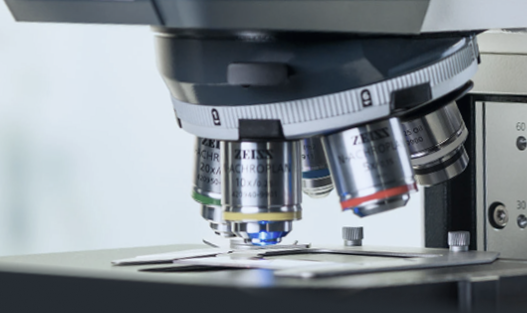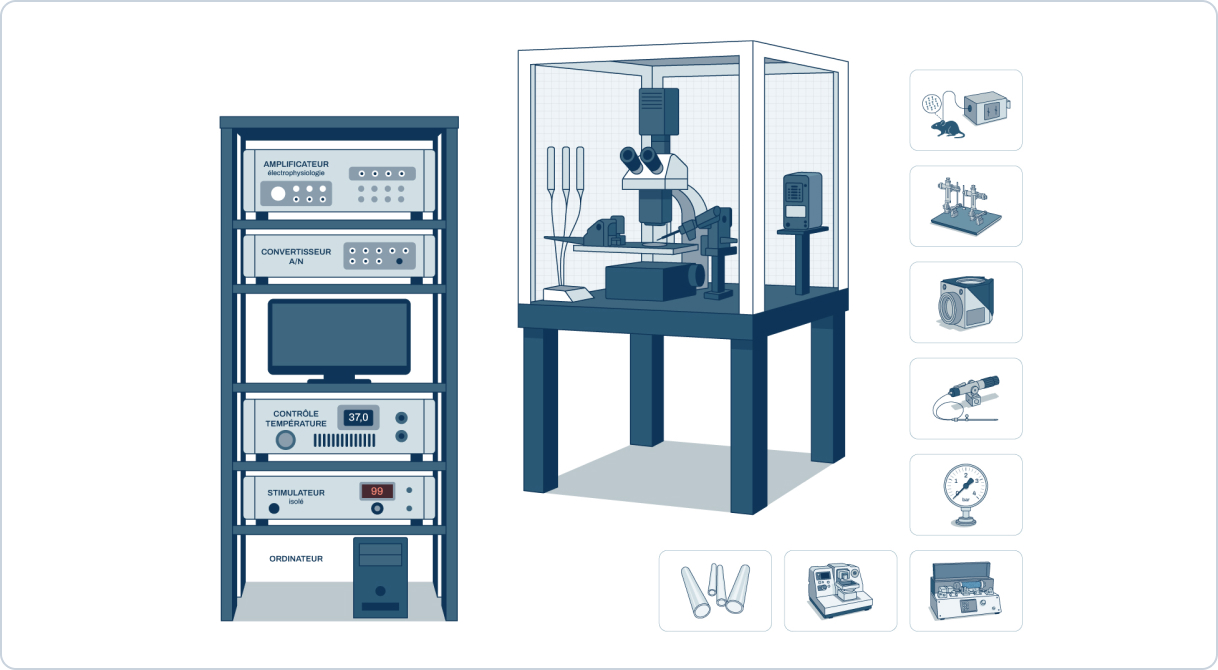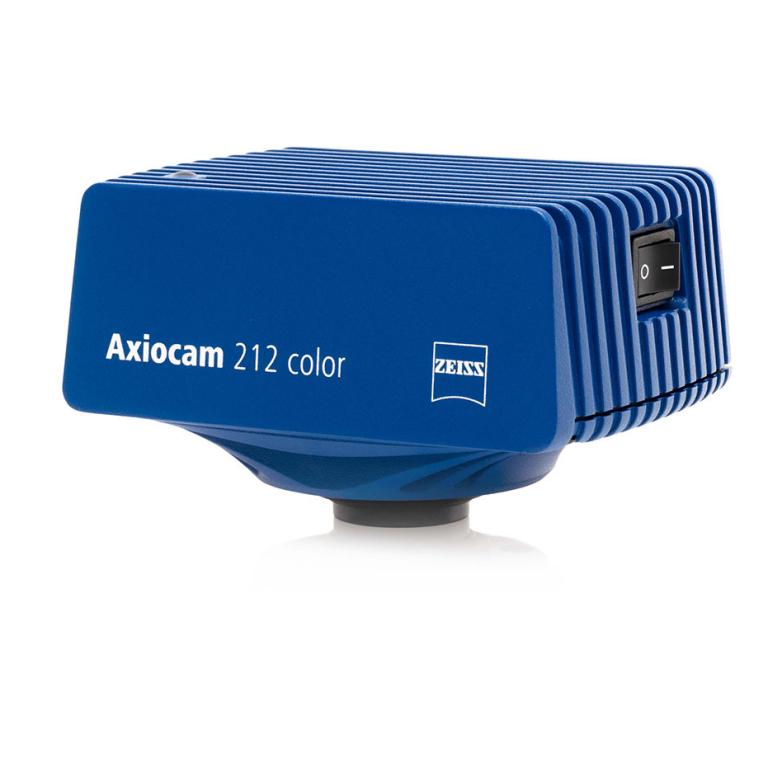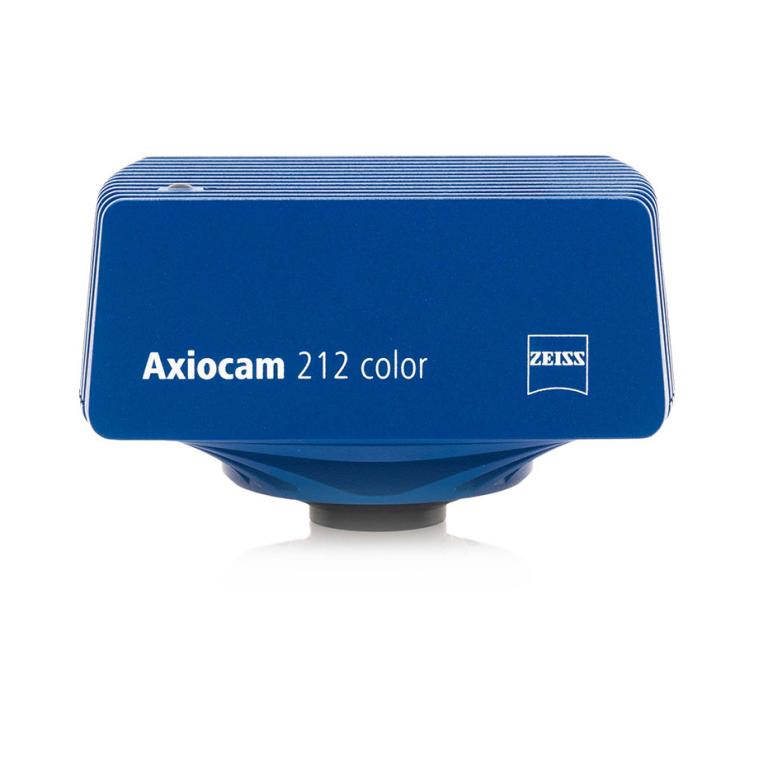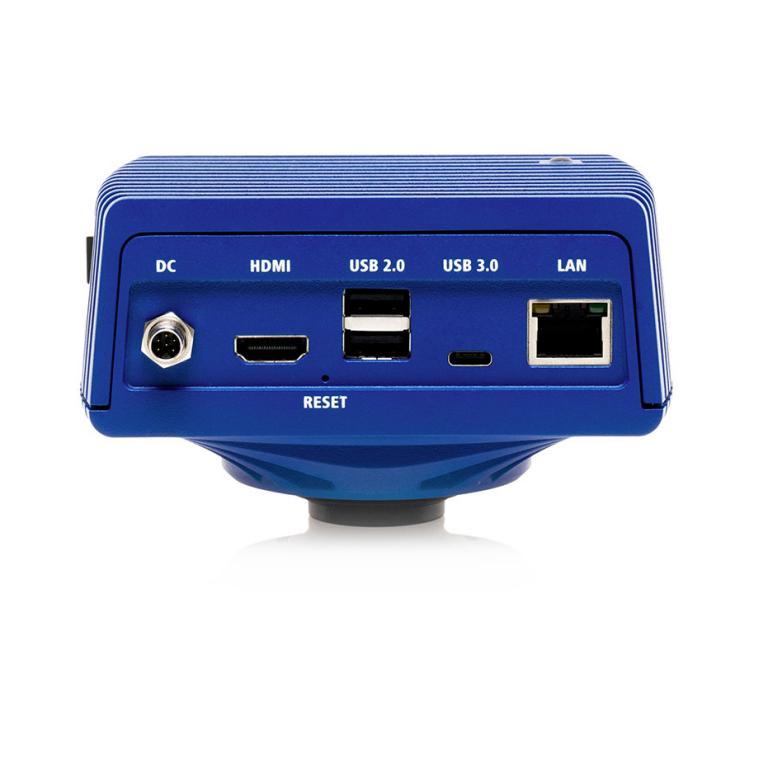Axiocam 212 colour camera
ZEISS Axiocam 212 color
12-megapixel digital colour camera for intelligent documentation
Description of the ZEISS Axiocam 212 Colour Camera
This camera stands out for its ability to generate images in 4K resolution with faithful colour rendition at up to 30 frames/second.
Operating either in standalone mode via an OSD screen (without a PC) or connected (USB, Ethernet or Wi-Fi), it is perfectly suited to digital classrooms, connected laboratories or independent use.
Specifications of the ZEISS Axiocam 212 Colour Camera
- 12.3 MP (4032 × 3044 px) colour CMOS sensor
- Maximum resolution 4K (3840 × 2160 px), Full HD (1920 × 1080 px)
- Refresh rate up to 30 fps depending on connection and resolution
- Standalone operation: control via mouse/keyboard without a PC
- Multiple connections: HDMI, USB 3.0 Type-C, USB 2.0, RJ45 Ethernet
- Wi-Fi compatible via adapter
- Real-time image enhancement: sharpness, noise reduction, HDR
- ZEISS Labscope (Win/iOS/Android) and ZEN Blue/Core software compatibility
- Integrated TWAIN driver for compatibility with third-party software
- Perfect integration with ZEISS Axiolab 5, Axioscope 5/7 microscopes
- High image quality with faithful colour reproduction
- Easy documentation: direct recording to USB stick
- Intuitive user interface via OSD (on-screen display)
- Automatic exposure function, annotations, measurements, multi-channel
Technical specifications of the ZEISS Axiocam 212 Colour Camera
| Caractéristique | Valeur |
|---|---|
| Type of sensor | CMOS with rolling shutter |
| Sensor size | 9.3 mm (1/1.7″) |
| Pixels | 12.3 MP (4032×3044), 8.1 MP (3840×2160), 2.1 MP (1920×1080) |
| Pixel size | 1.85 µm or 3.70 µm (binning) |
| Maximum frequency | Up to 30 fps (HDMI/USB depending on resolution) |
| Spectral sensitivity | 400-700 nm (integrated IR filter) |
| Interface | HDMI, USB 3.0 Type-C, USB 2.0, RJ45, M8 |
| Cooling | Liabilities |
| Power supply | Via M8 interface |
| OS compatibility | Windows 10/11 (Labscope, ZEN), iOS ≥ 15, Android ≥ 12 |
Applications
- Education and training: Ideal for teaching life and material sciences, particularly in connected environments or didactic laboratories.
- Routine documentation: Ideal for archiving images in the laboratory and for routine work in cell biology, histology or botany.
- Stand-alone digital microscopy: use without a computer in mobile environments or with limited IT infrastructure.
- Analysis in production environments: Quality inspection in industrial laboratories or quality control.
